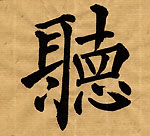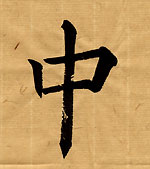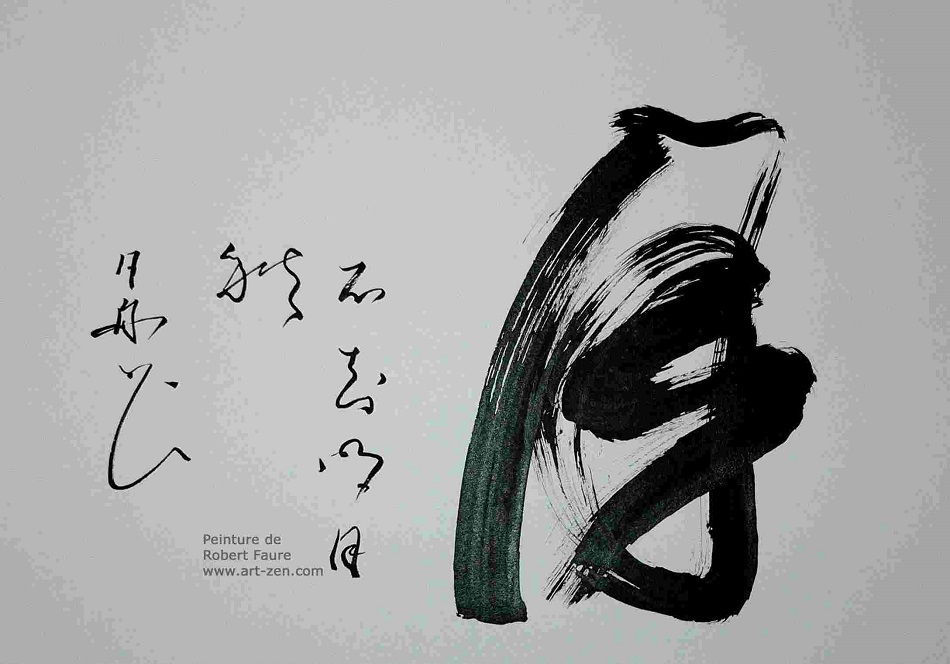Calligraphy
The adventure of ideograms
The art of writing in the Far East emerged in China, between 3000 and 4000 BC, and spread as far as Japan, throughout Asia and the Middle East. This script is made up of signs which convey meaning without representing spoken language. It is a form of language you have to see to understand: it is not phonetic. These signs are ideograms, based on the simplest representations of elements in Nature such as the sun, the earth, the rain, a hand.
These ideograms gradually caught on in Japan, around 500 AD. These Chinese characters adapted by the Japanese language are called KANJIS.
An ideogram represents, in quasi pictorial form, a reality, an emotion, a concept. Among the simplest, there is the one for "China", also known as "the Middle Empire", expressed by a sign emphasizing, in graphic form, the idea of symmetry.
Another obvious example of how the signs are derived from reality: the characters for man* and for prisoner*.
Ideograms fit together and are interconnected like pieces of a jigsaw puzzle. They are based on very concrete representations, close to human feelings and they build up images which can convey infinite shades of meaning. For example, the sign for a man, juxtaposed to that of a tree means a man at rest. More symbolically, a concept like concentration or vigilance is made up of three juxtaposed elements: the ear, the eye and the heart. Real concentration requires a combination of seeing, listening and generosity of feeling.
This representational universe is closely embedded in images and the imagination. Each image, depending on how forcefully and skilfully it has been rendered, is suggestive of meaning. So the world of ideograms is in itself an art form which is all about representation.
"Even the moon does not know that it shines"
Calligraphy realized by Robert Faure




